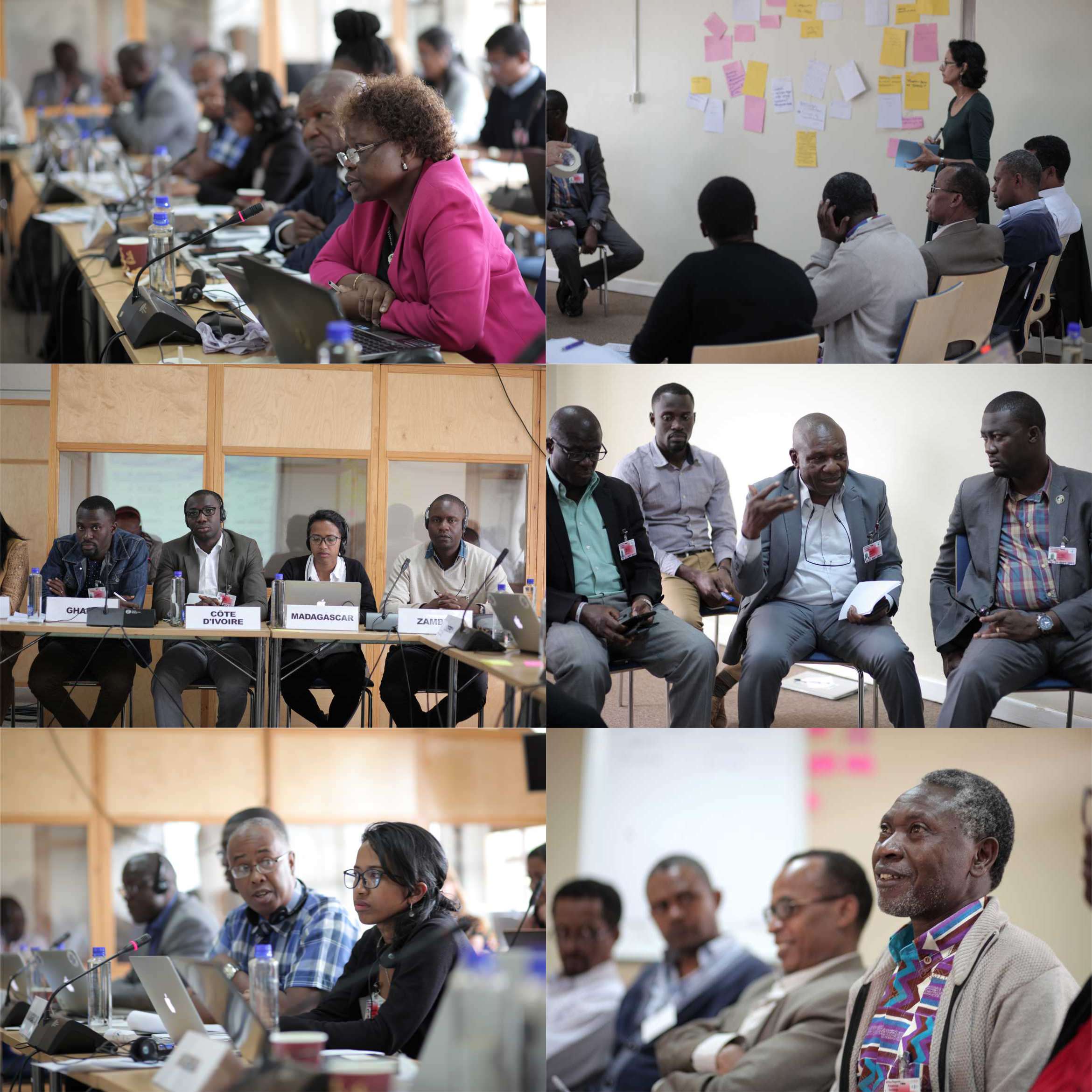African countries that have been engaged in REDD+ over the past few years are now navigating the transition from REDD+ readiness to implementation. There are increasing new international opportunities to finance REDD+ implementation. While acceding to REDD+ finance and embedding forests in national efforts to build low-carbon economies remain a challenge many countries in Africa are confronted with, there are many experiences and innovations, which are emerging in the region that are fueling the transition from readiness to implementation.
The 2017 UN-REDD Africa Knowledge Exchange, held in Nairobi in September 2017, was aimed at contributing to accelerate this transition by providing a space for focused technical dialogue and experience-sharing among eleven UN-REDD Partner Countries in the region. The event saw the participation of 22 forestry sector experts who are engaged with REDD+ on a daily basis – including at decision-making level. While there was also a representation of civil society and indigenous peoples, it was particularly encouraging to note that 30 percent of the participants were women.
Countries reflected upon lessons learned and challenges associated with completing varying degrees of readiness while embarking on implementation at the same time.
All participating countries have completed their REDD+ national strategies through multi-stakeholder participatory process, providing the framework for REDD+ in their country. These national strategies have provided the basis for implementation and the development of investment plans. Countries that benefited from the experience of other countries developed more detailed REDD+ strategies and costed their policies and measures.
Most participating countries have also started developing their national forest monitoring systems (NFMS), and several countries submitted their forest reference (emission) levels (FRELs/FRLs) to the UNFCCC. However, as most countries had to wait until the identification of policies and measures, the development of safeguards information systems (SIS) have lagged behind (see more on this here).

Among the main challenges and lessons identified were:
-
The overarching nature of REDD+ requires work and coordination both in and outside the forest sector for successful implementation.
-
Securing political will at the highest level is critical to integrate REDD+ into national planning processes so that overarching investment plans can be developed.
-
Managing community expectations of REDD+ is crucial, and the implementation phase should consider short-term needs at the local level.
-
Many policies and measures are targeted to community based management of natural resources. Notwithstanding the challenges related to benefit sharing, this is an area that needs to be addressed considering social and economic issues as well as the policies, laws and regulations (PLRs) framework within the REDD+ context.
-
The issue of land use management was identified, especially in relation to planning around mining activities.
-
Approaching the private sector to finance REDD+ activities, as well as tapping into and accessing funding windows available for REDD+ implementation was seen as another serious challenge.
Countries shared their experience from engaging in investment planning after developing their National Strategies and accompanying Warsaw pillars. An interesting example came from Ethiopia, which has developed an overarching Climate Resilient Green Economy Strategy and created an accompanying finance facility to fund this; Norway has stepped in to fund this.
Zambia went through a stakeholder engagement process to review its core investment priorities in the light of potential risks and benefits. The country then brought many partners together to build a REDD+ investment plan that can be presented to many potential donors.
Côte d’Ivoire built on its National Strategy to develop an investment plan and a GCF proposal. The country has also conducted an analysis by mapping flows of public finance – from both national and international sources.
Uganda developed and presented an investment proposal to the Forest Investment Program which was assessed positively.
Though different initiatives and approaches exist, discussions on preliminary experiences with REDD+ implementation revealed that many countries are grappling with finding ways to access REDD+ funds.
Within this context, the key opportunities noted by countries were:
-
The upcoming results-based payments (RBPs) window is not the only option under the GCF, African countries should make use of all windows: Readiness, Project Preparation Facility (PPF), Concept note review, fully fledged proposals. There will be other RBPs pilots under the GCF.
-
GCF funding for Phase 2 – investment and implementation phase – is particularly relevant for countries with mid-forest cover and are less competitive in terms of emission-reduction potential. African countries with this type of forest cover should lobby for a cap in this space. Predictability of GCF funds for Phase 2 in African countries should be discussed.
-
Pilot project experience is crucial for positioning in terms of planning, but also acceding to REDD+ finance.
Participants further discussed challenges related to reconciling REDD+ at scale, and shared experiences on preparing and submitting their FREL/FRLs to the UNFCCC.
Feedback through a final survey indicated that participants were satisfied with the knowledge gained during this two-and-a-half day event.


